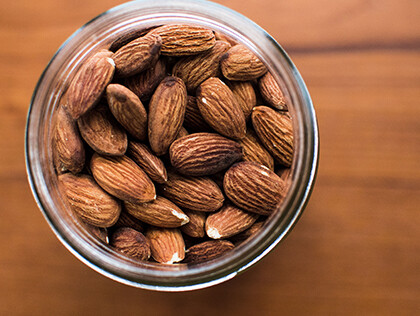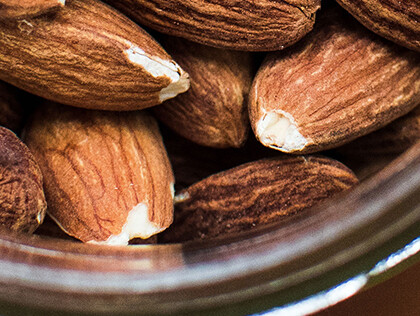


Almonds
Almonds need hot summers and cold winters to produce a good crop. They are a member of the rose family; peaches and apricots are related species.
As with many other nuts, the hulls can be used in other industries. In California, the fuzzy hulls often go to dairy farms to be used as animal bedding, or are burned as biofuel.
Formats
- Whole Natural
- Whole Blanched
- Split Blanched
- Slivered
- Flaked
- Nibbed
- Ground
Other points to note
Both pasteurised and unpasteurised nuts are available. However, it should be noted that the blanching process involves soaking in 96°C water so soften the skins prior to removal; this high heat is also a very efficient way of killing off harmful bacteria.
There is some debate as to the value of pasteurising almonds, and the high-quality production methods of the growers means that food safety standards are very high.
Countries of Origin
- USA (80% of global production)
- Spain
Harvest
- August through to October
Varieties
Californian almond varieties such as Carmel, California or Non Pareil tend to be bigger in size and flatter in shape than Mediterranean almonds. The Mission varieties of almond, which are more normally grown in Spain, are smaller and rounder with a darker skin and a more distinctly ‘almondy’ flavour. Varieties such as Marcona produce a larger proportion of ‘bitter’ almonds in the crop, which give a more intense flavour when chopped or ground, and it makes them a preferred variety for use in making marzipan.
Macronutrients
- Source of protein
- High in fibre Low in salt
Vitamins & Minerals
- High in Vitamin E
- High in Potassium, Phosphorus and Magnesium
